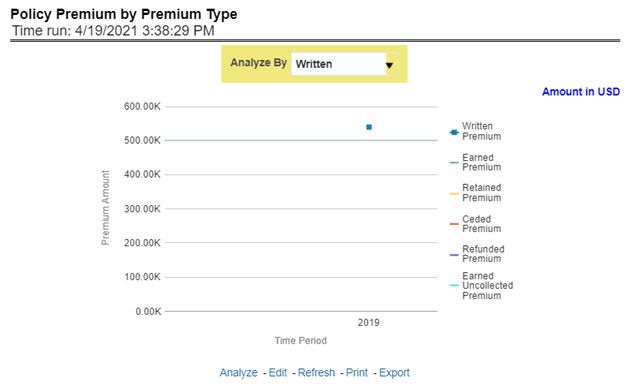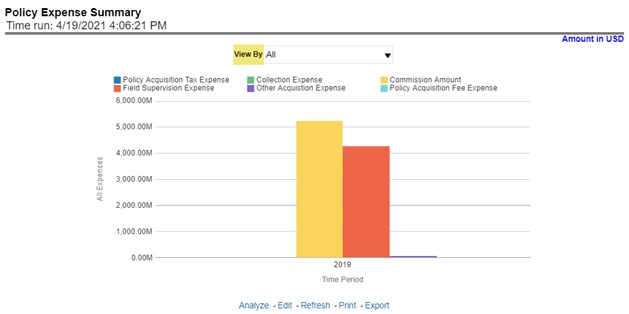5.3.2 Key Facts Tab
The Key Fact tab includes Key Performance Indicator Reports for lines of businesses at the corporate level. The filters for this tab allow the report results to be focused on selected combinations for comparison and targeted analysis.
The filters include:
- Time
- Company
- Geography
- Lines of Business
The various reports available under this tab are detailed in the following sections.
Key Policy Performance Indicators
Figure 5-123 Key Policy Performance Indicators

Policy Premium by Premium Type
Figure 5-124 Policy Premium by Premium Type

Policy Expense Summary
Figure 5-125 Policy Expense Summary

Policy Count by Policy Type
Figure 5-126 Policy Count by Policy Type

Policy Acquisition by Distribution Channel
Figure 5-127 Policy Acquisition by Distribution Channel

Policy Attrition - Company versus Insured
Figure 5-128 Policy Attrition - Company versus Insured

Policy Attrition by Reason
Figure 5-129 Policy Attrition by Reason

Policy Attrition By Distribution Channel
Figure 5-130 Policy Attrition By Distribution Channel

Policy Attrition By Billing Plan
Figure 5-131 Policy Attrition By Billing Plan

Cancellation Attrition Timing
Figure 5-132 Cancellation Attrition Timing
